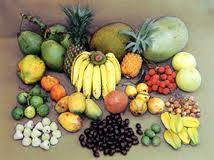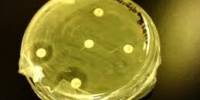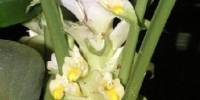Introduction
Since the evolution of Homo sapiens about 25,000 years ago, men were mainly hunters and food gatherers. They were dependent on the forest for seeds, grains, roots, rhizomes, leaves and fruits for their very survival for about 15,000 years, after which agriculture came into being in its very primitive stage. Therefore, fruits were among the most important foods that helped man to survive from the very beginning.
The first fruits grown by man were as early as 700Q B.C and mangoes have been under cultivation for more than 4000 years. In 274 B.C Emperor Asoka came to the throne of Mauryan and his empire included eighty percent of the present-day Bangladesh. He was the first Indian monarch who encouraged arboriculture and adopted it as a state policy. Asoka encouraged the planting of trees in gardens and along roads in the form of avenues. One of the Asoka pillars bears the following inscription: “….. on the roads I have had banyan trees planted which will give shade to beasts and men. I have had mango grooves planted and have had wells dug and rest houses built every nine miles.
In the sculptures of the 2nd century B.C it is now known to us that plantain (Musaparadisiaca), mango (Mangifera indica) and jackfruit (Artocarpus heterophyllus) were widely cultivated. Mango seems to have been the favourite fruit and this species together with the palmyra palm (Borassus flabelUfer) and wild date-palm (Phoenix sylvestris) were extensively found in Sanchi sculpture.
Fruit Defined
A fruit is considered to be the edible, fleshy portion of a woody herbaceous or perennial plantj whose development is closely associated with the flower. (General)
A fruit as an expanded and ripened ovary with attached and subtending reproductive structure. (Horticultural)
A fruit includes a matured ovary plus those parts directly associated with the ovary. (Botanical)
Present Status of Fruit Production of Bangladesh
| According to 1990-1991 statistical data Total fruit production Total area under fruit Total area of Bangladesh Fruit compared to the total area Net cropped area (NCA) Fruit compared to the NCA Fruit compared to TCA Total Population Present fruit consumption in Bangladesh In developed countries Requirements Annual Requirements Present Production Shortage | 1605620 MT 201604 ha 14786290 ha 1.35% 8144355 ha 2.46% 1.25% 109.5 million 35 – 40g/person/day 13 kg/person/year 50 – 100 kg/year 75g/person/day 27 kg/person/year 2983875 MT 605620 MT 378255 MT |
| Major Fruits Producing areas of Bangladesh | |
| Fruits 1. Banana 2. Jackfruit 3. Mango 4. Pineapple 5. Litchi 6. Coconut 7. Melon | Growing area Barisal, Mymensingh and Narshindhi Dhaka, Ctg. Hill-tracts Rajshahi Sylhet, Ctg. Hill-tracts Rangpur, Dinajpur Barisal, Noakhali Natore |
Mango (Mangifera Indica)
Mango, a tropical to sub-tropical fruit, originated in the Indian sub-continent in the prehistoric times. It has been reported that about 4,000 years ago the mango plant was seen in India and since then it has been growing in the Indo-Bengal region where it was first cultivated. The world production is about 14 million tons per year of which India, the largest producer, alone produces 9.30 million tons, followed by Brazil, Pakistan, Mexico, Philippines, Indonesia, Haiti, China, Bangladesh, Egypt, Sudan, Srilanka and Cuba.
The mango grows in almost all parts of Bangladesh but the commercial and good quality grafted mangoes with known varietal names are mostly grown in the North-Western districts and mangoes of unknown varieties (seedling mangoes) are grown in the South-eastern and other parts of the country. The Mango tops the list in terms of area and occupies third position in production among the fruits grown in Bangladesh. At present (BBS, 1992), Bangladesh produces 180,000 tons of mango annually from 49 thousand hectares of land at the rate of 3.66 tons per hectare. But, according to FAO, mango production in 1969 – 1970 in Bangladesh (then East Pakistan) amounted to an average of 424,000 tons. The main reason for the decline mango production is because the trees have grown old and have not been replaced.
CLIMATE AND SOIL Climate
In general, the climate of a place is dependent on its latitudes, altitude, temperature and rainfall. Mango is grown under a tropical and sub-tropical climate. Mangoes are grown commercially within an area roughly 30° north to 30° south latitude. The main mango growing areas of India, the largest producer, is situated between 8° to 30° north latitude. Whereas the mango growing areas of Pakistan lies between 24° to 32° north latitude. Bangladesh is situated between 20.5° to 26.5° latitude, meaning that its southern part falls into the tropical and northern part into the subtropical zone. The mango is in general a tropical fruit that grows in the subtropical zone too, up to almost the border of the temperate region. The Mango grows up to an altitude of 4600 feet (1400m) but the fruiting is poor above 2000 feet. Altitude also affects the time of flowering. It is reported that for each 400ft increase in altitude, flowering is retarded by four days. Similarly for each degree of latitude south or north of the tropics, flowering is delayed by four days. So, the range of latitude and altitude in Bangladesh is basically good for mango.
The most suitable mean annual temperature ranges between 20 and 30°C. Bangladesh’s overall mean temperature in summer ranges between 25°C and 33°C, and in winter between 11°C and 26°C. This is somewhat equivalent of an over-all mean annual temperature of 18° to 30°C, which is quite good for mango production.
Soil
The mango can be grown in almost all kinds of soil, but the most desirable soil is one which is of medium texture, that is deep and well drained and has a pH range of 5.5 to 7.5 and a water table below 180cm around the year. The soil pH of the western areas of Bangladesh ranges between 5.0 to 8.”0, whereas the soil pH of the eastern areas ranges between 4.5 to 6.0. Most mango soils in Bangladesh range from a pH of 5.0 to 8.0 and they are deficient in organic matter and nutrients such as phosphorus and sulphur. So, care should be taken to rectify these deficiencies before planting.
Varieties
The mangoes of Bangladesh belong mainly to two groups, viz: (1) the elite mango varieties propagated through grafting and other vegetative means, locally known as ‘Kalamer Aam’ (grafted mangoes) and (2) fruits borne by seedling trees known as ‘GutiAam’ (seedling mangoes). The former have names, they range from early to late ones in maturity and their taste is assured, most of them being superior. The latter bear no recognized names as such, tend to mature early, and the taste in not assured, most of them being inferior.
Early Varieties
The varieties which can be harvested within mid May to mid June, e.g. Gopalbhog, Khirsapat, Brindabani, Gourjeet and Satiarkara (Mahananda).
Mid-season Varieties
The varieties which can be harvested within mid-June to late June, eg. Langra, Kishanbhog, Kohitoor, Lakhanbhog and Surjapuri.
Late Varieties
The varieties which can be harvested within July to mid-August eg. Fazli, Ashwina, Kuapahari and Mohanbhog.
In Bangladesh, there exists a large number of superior varieties which are of good taste. However, only a few are of commercial importance being produced in a large quantity for sale in the market. These are briefly described below.
Time of Planting
The latter part of summer, that is May to mid-July is the best period for planting. If irrigation facilities are available and planting material is in hand, planting in spring and early summer, from March to April, is also good.
Planting Distance
The planting distance varies according to the variety, the fertility level of the soil and general growing conditions in the area. Where the growth is vigorous, the distance should be 12m X 12m, but where the growth is less, it can be reduced to about 10m X 10m.
Digging of Pits
In locations where the soil is loamy and deep, pits of 75cm X 75cm X 75cm can be dug at the desired distance. In shallow and hill soils the pits should, however be of at least 1m X 1m X 1m size. As the pit is dug up, the top half of the pit soil should be placed at one side of the pit with the bottom half placed at the other. Eventually, these two halves will exchange their position at the time of back filling the pit. Because the top soil is usually better, both physically and nutritionally, its placement at the bottom will help the initial growth and development of the mango graft. (The pit should remain exposed for 10 to 15 days before it is filled with soil, manure and fertilizer. The pit is filled up with soil mixed with 10 – 20 kg of well rotted cowdung or compost, 500g TSP, 250g MP 250g sypsum and 50g zinc sulphate is then mixed into the top 10cm of the soil by spading lightly.
And Pruning
Normally mango trees require very little or no pruning. However, the training of plants in the initial stage is very essential to give them the proper shape, specially when the graft has branched too low, the process of training becomes very important. At least 100cm of the main stem should be kept free from branching and the first leader/main branch may be allowed after that. The main branches should be spaced in such a way that they grow in different directions, and are at least 20 – 25cm apart otherwise there is every chance of breakage due to the smaller crotch angles and heavy top.
The branches which exhibit a tendency of crossing and rubbing each other should be removed in the pencil thickness stage otherwise they break by rubbing each other at a latter stage and create complications. Secondly, if the centre is closed, the fruits produced are of poor quality due to less colouration in the absence of sufficient sunlight.
By following the above practice and after giving proper shape to the tree there will be little need for future pruning except for the removal of diseased, pest infested or dried shoots.
Harvesting
Fruits may be ready for harvesting at the time when they show a slight yellowish colour around the fruit stalk or when the specific gravity reaches 1.01 to 1.02 or when naturally one or two ripe fruits start dropping from the plant. They may be harvested by hand picking or by using a bamboo-pole picker.
Banana
Origin, Distribution and Production
Banana are the most important tropical fruits (Purseglove, 1972). As the banana was commonly grown in Southern Asia from India to China, and in islands to the south and east, before the earliest written history, it is impossible to say with assurance just where it originated. It is generally agreed, however, that all the edible bananas and plantains are indigenous to the warm, moist regions of tropical Asia, probably in the mountains region where Assam, Burma, Thailand and Indo-China meet (Hayes, 1957). Its cultivation is distributed through the warmer countries and is confined to regions between 30°N and 30°S of the equator. The major producers of banana and plantain are given in Table 1 (Stover and Simmonds, 1987).
Acreage and Production in Bangladesh
Banana is the most important fruit in Bangladesh comprising 42% of the total fruit production in the country (Haque, 1988). In the year 1992-93 the area under banana was 38 thousand hectares which produced 636,000 lakh tons of fruit (BBS 1993).
CLIMATE AND SOIL Climate
Banana is a fruit for tropical and subtropical regions. It is typically a humid lowland plant and its culture is not recommended in tropical highland regions above an elevation of 1000 m. The sole exception being the dwarf forms chilling injury occurs at temperature below 120c when latex coagulates. Growth reaches an optimum at 270C, then declines and come to a stop at”38°C.J
Soil
Banana can be grown in almost all types of soils in Bangladesh provided adequate soil moisture is available. The ideal conditions for banana cultivation in tropical lowland regions are alluvial soils with a soil reaction ranging between pH 4.5 and 7.5. The top soil must be of the highest quality chemically as well as physically, since the plants are shallow-rooted.
Varieties
In a survey by Banana project, BAU, it was found that there were more than 40 varieties available in Bangladesh? But a particular variety is known by more than one name is different places and the actual number may be around 32 (Haque, 1984). (The important banana varieties grown in Bangladesh are: Amrit Sagar, Sabri, Champa, Meher sagar etc.
Planting Materials
In Bangladesh, banana suckers are commonly used for planting. The suckers are two types, sword suckers and water suckers. Sword suckers have a well developed base with narrow sword-shaped leaf blades at the early stages and after a certain height the successive laminae become Increasingly broader. Water suckers are those which produce broad leaves at a very early stage and have a thin base. Both suckers arise in large numbers from the parent rhizome.
Care After Planting
- Weeding — to be carried out as necessary.
- Desuckering — unwanted suckers are removed by cutting off at ground level as and when necessary.
- Earthling up and drainage — is done before rainy season to avoid water logging during rains.
- Irrigation – at least one in each month when dry conditions prevail.
- Propping — is needed at the time of bunch emergence.
- Bagging of bunches — may be done with blue polythene bags to protect the fruits from sun burn, hot winds and dust which improves the colour of the fruits.
- Removal of dry diseased in order to keep leaves — the plantation clean.
- Removal of male bud and floral remnants — is said to promote fruit development.
Harvesting
A bunch usually takes 90 to 120 days to mature after shooting, depending on climate and cultural practices. In Bangladesh, the main harvesting season is from September to November. The banana is harvested when the ridges on the fruit surface change from angular to round and the colour of the skin turns from green to light green.
JACKFRUIT
JACKFRUIT (Artocarpus heterophyllus)
Originally native to the Indian sub-continent, the jackfruit is now widely cultivated throughout the tropical low lands of both hemispheres (Ochse et al., 1981). The tree bears one of the largest edible fruits known. The huge syncarps are always in demand and often bring high prices in the countries where the crop is planted. This is one of the many fruits which the small farmer or village of tropical Asia, America or Africa can grow with little or no care, thereby afforcing him a more varied diet as well as a source of income. Jackfruit is the national fruit of Bangladesh.
Acreage and Production in Bangladesh
The jackfruit ranks third in acreage and second in production in Bangladesh. There are 28,000 ha of land under jackfruit having an annual production of 257,000 tons (BBS, 1993).
Uses and Composition
Jackfruit is a popular fruit in Bangladesh. The pulp of the ripe fruit is eaten fresh and sometime it is preserved in syrup or dried. The juicy flesh around the seeds has normally a pungent odour and is sweet or acidic. The large seeds are boiled and roasted before use. They are used in many culinary preparation. The pulp of unripe fruits is used as a vegetable. The rind and leaves are fed to livestock. The tree may be used for beautification of the homesteads. The latex is used as sealing material. The yellow heart wood is a valuable timber and also produces a yellow dye.
Climate and Soil
The jackfruit thrives in the tropical low lands below an elevation of 1000m. A warm, m climate is best. It flourishes in humid hill slopes even up to an elevation of 1500m but the quality of fruits deteriorates in higher altitudes. The tree will grow on almost any soil, bi prefers a deep, well-drained loam soil. Drainage must be good, on the other hand, the soil | moisture content must be kept at a high level. In the flood of 1986 in Bangladesh, a large number of jackfruit trees were severely injured or killed when mangoes and other trees under the same conditions remained unaffected. It was found that the jackfruit grows rapidly when planted in rich soil and under moist climatic conditions.
Varieties
Being cross pollinated mostly seed propagated the jackfruit has innumerable types or forms. The fruits differ in shape, size and quality (Haque, M.A. 1977). Although, there is no distinct variety, three types of jackfruit are found, e.g. (1) Khaja – hard pericerb, (2) Ghila – the pulp is very juicy and soft (3) Dorosa – the pulp is fairly firm and juicy.
Planting
The land for jackfruit plantation is prepared well with 5 or 6 ploughings. Weeds are cleaned and the land is properly levelled. The well-prepared land will provide the opportunity to grow inter-crops. Square or hexagonal system is followed for planting with a planting distance of 10-12m. In fertile soils, a spacing of up to 12 X 12m will be sufficient for the fruit crop. Higher density planting can be practiced in lighter and poorer soils. The plot is laid out according to spacing and pits of 1m diameter and 1m in depth are dug. The following dose of manures and fertilizers is applied in pit.
Harvesting
The multiple fruit or syncarp as it is known technically, consists of a greatly enlarged fleshy peduncle and numerous carpels which have fused together, with the exterior covered by a more or less thick rind. The juicy pulp and the pericarp around the large seeds are the edible portion. The jackfruit flowers in December – March and fruit ripens in May – August. The plant starts bearing at 5-8 years of age. The yield is not similar every year. Some trees produce a heavy crop in one year followed by much less production in the next year. Normally, a tree of 15-20 years nold bears anything from a few to about 200 fruits annually. Weight of fruits varies widely among the types. Individually, fruits may weigh from a few kilograms to about 15-20 kg and in some cases may even be up to 30-45 kg. The average yield in Bangladesh is 9t/ha.
GUAVA
Introduction
Guava, the apple of the tropics, is one of the most common fruits in Bangladesh. It belongs to the genus Psidium and family Myrtaceae. It is a native of South America. At present the major guava producing countries are California, Florida, Cuba, Brazil, Taiwan, Mexico, Peru, Hawaii, China, Malaya, India, Pakistan, Thailand and Bangladesh. In Bangladesh it occupies 4,858 hectares and produces 24,000 Metric tons of fruit (1990-91).
Cultivar
As a result of seed propagation, there are innumerable variations in the characteristics of guava. However, because of multiplication from the same stock in a specific area for many generations, some cultivars have become stable in certain localities of the country. Swarupkathi, Kanchannagar and Mukundapuri are some of the most well known cultivars. Besides these, Kazi piara – a high yielding variety of guava was developed by BARI and released through National Seed Board in 1984. Recently another one variety of guava was developed by IPSA. Mukundapuri, Swarupkathi and Kanchannagar are recommended for growing at Brahmanbaria, greater Barisal and Greater Chittagong district, respectively. Whereas Kazi piara is suitable for all over the country except in the saline areas. The gootees are available in Government and private nurseries of those areas.
Soil
Guava trees are very hardy and can thrive on all types of soil provided that the roots have access to a constant supply of water but they are sensitive to water logging. For best production, guava should be grown in rich deep, well drained soils, high in organic matter. The crop is fairly salt and drought resistant and the pH may range from 4.5 to 8.2.
Climate
Guava is successfully grown under tropical and subtropical climates. In areas having distinct winter season, the yield tends to increase and the quality improves. It can be grown from sea level to an altitude of about 1500 in. High temperature at the time of fruit development causes fruit drop. The optimum rainfall for guava ranges from 1000 mm to 2000 mm and the optimum temperature lies between 23°C and 28°C.
Propagation
Guava can be successfully propagated by both sexual method (by seed) and asexual method (by cutting layering budding and grafting). Among these methods seed propagation and air-layering are very common. But recently grafting method is recommended for the propagation of guava. (For details on propagation refer to the companion Manual on Plant Propagation and Nursery Management).
Training and Pruning
The main objective of training guava plants is to provide a strong framework and scaffold of branches suitable for bearing a heavy remunerative crop without damaging the branches. The system of training is open centre, in which the plants are headed back and four primary shoots are retained for the initial framework which are subsequently pruned by cutting one third to half of their length after 3 months. After making the initial framework, the two side shoots are permitted to grow initially and after 3-4 years, doubling of selected branches is continued.
As the flowers and fruits are borne on current seasons growth, thinning out, i.e. a light annual pruning, is considered beneficial to encourage new shoots after the harvest. All dead, diseased, unproductive branches, crowded shoots and water sprouts should be pruned back annually.
Thinning
High yielding cultivars like kazi piara bear such heavy crops that many limbs are broken or badly bent. They should be protected by thinning fruits at the young stage in such a way that the tree will retain one fruit for every 50 leaves.
Harvesting
When the fruit ripens, the fruit colour changes to yellowish green or yellow. The fruit is harvested in July/August and January/February of the following year. Guava is harvested individually by hand with proper care.
Yield
Seedlings come into bearing at 3 to 4 years of age and air-layered plants may bear fruit the second year after planting in the orchard but economic yields are obtained from 5 to 6 years onward in the case of high yielding varieties. A three year old plant of Kazi piara can yield on an average 128 fruits giving 53 kg per year. Grafted plants always gave higher yield than seedling trees.
Conclusion
Major fruits are always important parts of human diet. Most of the daily nutrient demand recovers by major fruits. Major fruits are extensively grown in our country. In our country produced large quantity of major fruits which are exported to other country.
References
1. Ahmad, K. 1976. Flowers, fruits and vegetables (3rd edn.) p.297, Alhaj Kamiruddin Ahmed, Chandpur, Bangladesh.
2. Ahmad, K. 1965. Agriculture in East Pakistan, (1st edn.) pp. 17- 21, N/S. Ahmad Brothers Publications, Dhaka.
3. Anonymous. 1976. Banana in West Bengal, Directorate of Agriculture, Govt. of West Bengal.
4. Bose, T.K. 1985. Fruits of India. Tropical and sub-tropical. Naya Prokash, Calcutta, India.
5. Haque, M.A. 1984. Effect of planting time on the production of banana in Bangladesh. Bangladesh J.Agril. 9(2): 23-32.
6. Haque, M.A. 1984. Effect of weight of sword suckers on the growth and yield of banana. Bangladesh Horticulture. 12(1): 41-45.
7. Haque, M.A. 1984. Intercropping in banana and its economic return. Bangladesh J. Agril. 9(3): 53-55.
8. Haque, M.A. 1984. Final Report. 1981-1984. Banana Research Project. Deptt. of Hort. BAU, Mymensingh.
9. Haque, M.A. 1985. Effect of clump planting on the growth and yield of banana (Musa sp.). Bangladesh J. Agril. 10(3): 25-29.
















